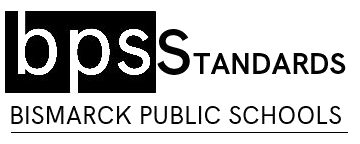SBE Parent Information
Standards-Based Education Parent Information ![]()
Developing a standards-based curriculum and shifting toward standards-reflected grades requires changes in the way teachers teach and in the way schools view education. The shift to standards-based education is perhaps one of the most comprehensive and complex endeavors the public educational system has experienced in over 100 years.
Because change is challenging and because the education field requires constant reflection and revision, the documents and practices that exist today could very well change throughout the years. Please be assured that any changes are based on reflection, research, and effective practices, leading to a greater understanding of how students learn, and are always made with the best interests of students in mind.
“The Only Thing That Is Constant Is Change.”
-- Heraclitus --
Clarifying the Purpose
What is standards-based education?
The purpose of standards-based education is to communicate student learning in relation to the standards; as a result, we believe this reporting method improves student achievement by aligning curriculum, instruction, and learning with essential standards within the content areas.
Standards-based grading measures the degree of mastery regarding established learning objectives. Grades and scores are not a comparison of one student to another, but rather a way to measure how well students are doing on grade-level/course level standards. In a standards-based classroom, learning targets based on prioritized standards have been identified, and teachers have designed lessons and learning activities that help students reach an understanding of the standards.
Although prioritized standards are the focus of instruction, teachers are expected to address all standards but not necessarily report them. This does not mean non-prioritized standards are not important or that they are not taught; it means that these standards may be addressed through the teaching of other standards.
TO ACCESS content and grade level standards, use the navigation buttons.
In a standards-based environment, teachers use a variety of assessment strategies such as pencil-and-paper tests, projects, discussions, essays, or reports. The student’s grade will be based on evidence the teacher collects demonstrating a student’s level of achievement within the learning targets. Because learning is a process that takes place over time, the teacher will provide feedback to the student about what to focus on next, and the student will be allowed to show improved learning over time. The goal of this approach is to communicate an accurate picture of the student’s learning and to encourage conversation about how the student can master the material for the class.
Why is BPS using Standards Based Grading?
The goal of BPS is to improve student learning by reporting grades that are accurate, consistent, meaningful, and supportive of learning, and the shift to standards-based learning is an effort to reach that goal.
Accurate: When basing a student’s grade solely on academic factors, the teacher creates a clear picture of what the student has learned without the influence of other factors such as extra credit, effort, and attitude. Factors, such as effort and attitude, are still essential, but are not part of the student’s academic grade and are communicated separately.
Consistent: For each prioritized standard, BPS teachers have created rubrics or proficiency scales that describe clear expectations for proficiency within those standards. These rubrics and proficiency scales not only shape assessments, but they are at the heart of instruction and learning activities as well. By creating these levels of proficiency, expectations for student learning are more consistent across grade level and content area.
Meaningful: A meaningful grade is one that clearly communicates what learning has taken place. In a standards-based classroom, scores are recorded by the standards rather than by type, such as tests or homework, making it easier to identify areas of strength and to address areas of concern for each student.
Supportive of Learning: This approach supports learning by focusing on the material that has or has not been learned rather than on accumulating points to reach a certain total. The reassessment policy also supports student growth by allowing new levels of learning to replace old when a student shows improvement on an outcome.
What does a standards-based teaching and learning classroom look like?
- Instruction meets the needs of every student and encourages them to achieve at high levels.
- All units, lessons, and activities are intentionally linked to the North Dakota content standards, and learning targets are clearly defined.
- Common courses have common expectations, common standards and assessments, which are intentionally aligned to the standards.
- Teachers know exactly where students stand in their progress toward mastering the standards.
- Teachers provide enrichment and intervention to meet the learning needs of students, using the multi-tiered system of supports.
- Students understand the expectations and purpose of units, lessons and activities.
- Students monitor their own progress toward proficiency.
- Students have multiple opportunities and ways to show learning.


